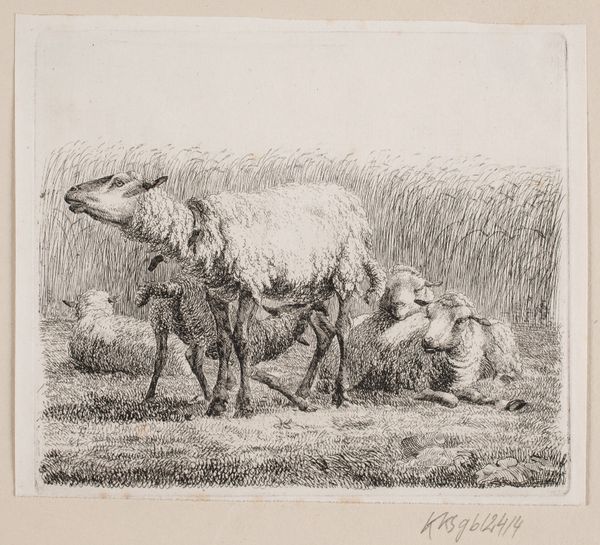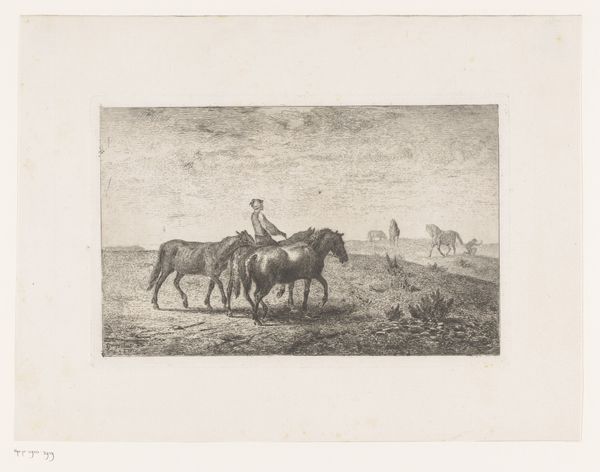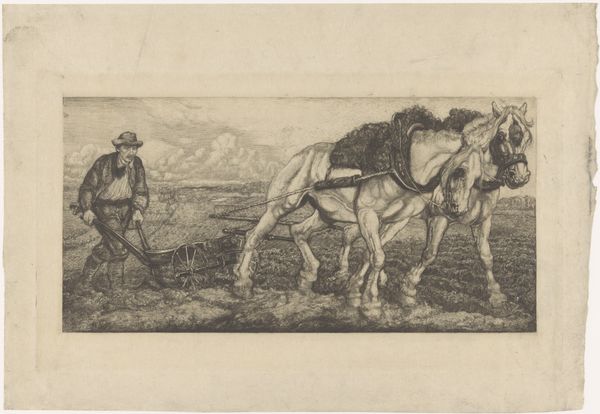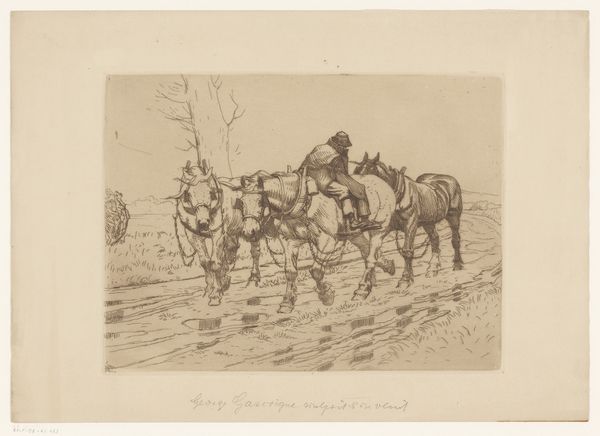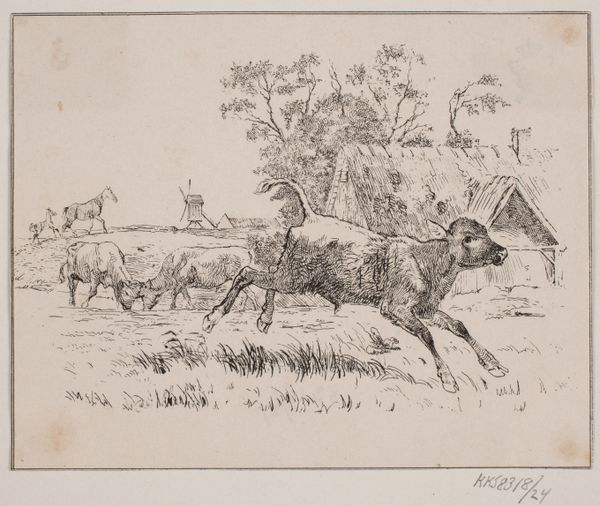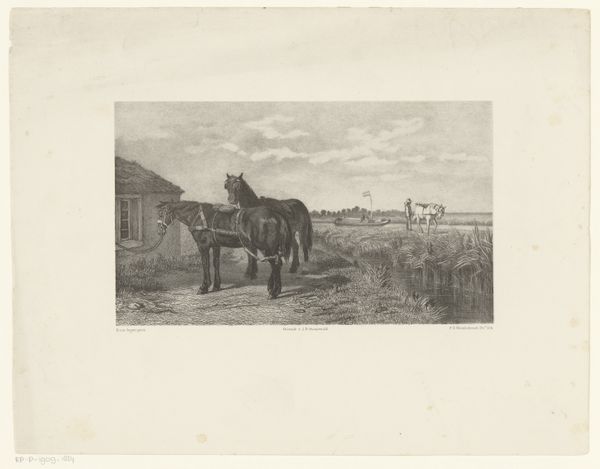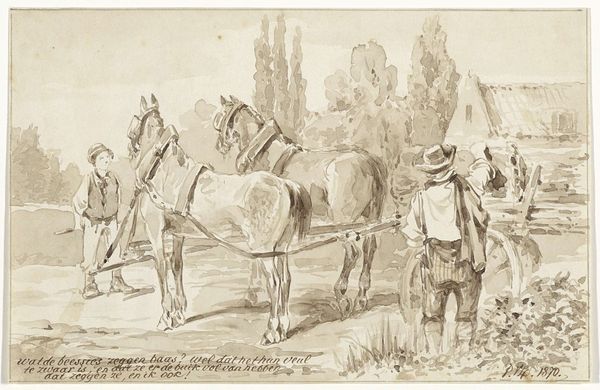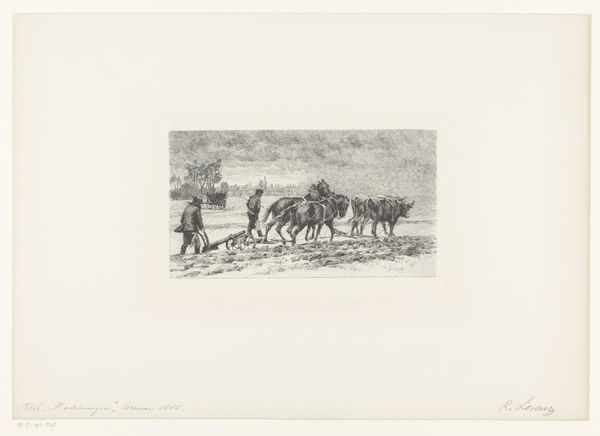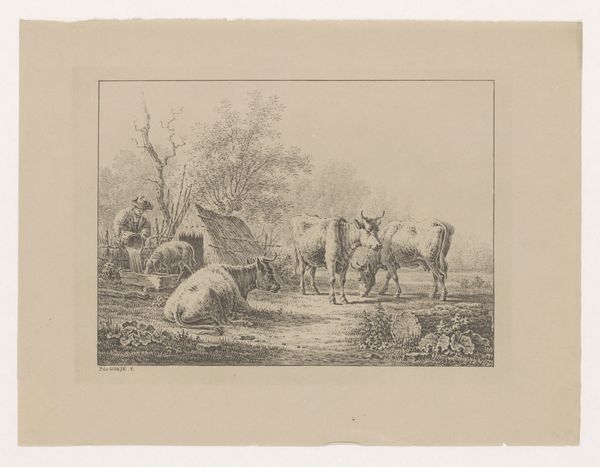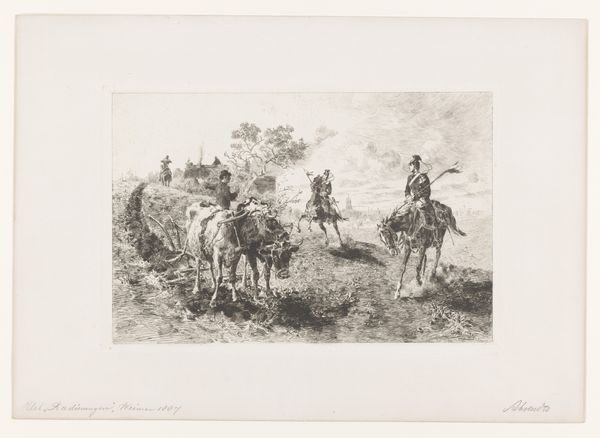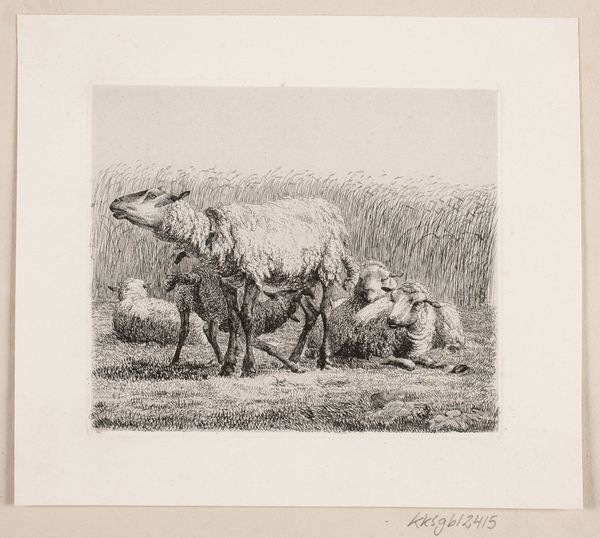
print, etching
# print
#
etching
#
landscape
#
etching
#
figuration
#
line
#
genre-painting
#
realism
Dimensions: height 187 mm, width 241 mm
Copyright: Rijks Museum: Open Domain
Curator: Before us, we have a print by Léopold Haeck entitled "Two Cows with a Farmer in a Landscape," likely created between 1878 and 1910. It's an etching. Editor: Immediately striking is the simplicity and serenity of this work. The light seems perfectly balanced. Note how the texture achieved in etching imbues the scene with a delicate quality; it invites quiet contemplation. Curator: Indeed. The scene evokes a slice of rural life. One can observe the historical context reflecting the growing fascination with rural settings, particularly with the rise of industrialization and urbanization in the 19th century. Prints like this became popular because they offered accessible views of idealized country life for urban audiences. Editor: Precisely. Haeck's masterful deployment of line creates both form and depth; note the cow closest to the viewer; observe how subtle gradations articulate form and volume. Also, the strategic hatching simulates light, imbuing depth onto the image. There is visual hierarchy generated in its purest form. Curator: Yes. This particular representation of rural life resonates with certain ideological implications. Depicting agricultural labor, for example, connects it with prevalent nationalist ideologies that romanticize peasant life and establish notions of collective identity associated with ideas of the traditional homeland and hard labor. It idealizes a very specific cultural setting, reinforcing some stereotypes along the way. Editor: And look at how he utilizes line—varied in thickness and density— to simulate texture of grass, foliage and clothing. Haeck truly transforms a mundane scene into something compelling; furthermore, note how its monochrome palette invites interpretation, encouraging our own creative input to complement what otherwise may seem static and straightforward imagery. Curator: And yet it makes a rather subtle social statement, reminding its public who worked to provide food for urban consumers. Let’s not overlook the connection this sort of image enabled, forging connections among different social worlds and highlighting specific viewpoints within them. Editor: A nuanced consideration for our visitors. In conclusion, we've hopefully explored Haeck’s delicate dance of composition and thematic focus. Curator: I agree, reflecting how an otherwise peaceful, commonplace rural moment reveals social conditions that produced it and in which it found significance.
Comments
No comments
Be the first to comment and join the conversation on the ultimate creative platform.
